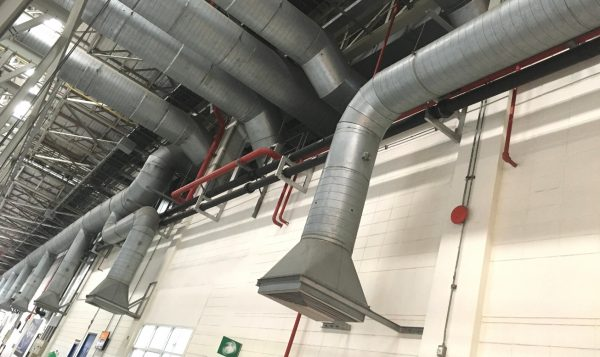Why Clean Air at Work Matters (More Than You Might Think)
- Ventxlabs Ltd
- Jun 25, 2025
- 3 min read
Ever walked into a workshop or factory and felt the air hit you? Not cold air. Not warm air. But something you can't quite put your finger on—maybe it's the smell of metal, maybe it's a bit dusty. You shrug it off, like most people do. But here’s the thing: what’s in that air might matter more than we realise.

So, what’s in the air anyway?
In a lot of workspaces—woodshops, welding bays, garages, labs—you’ve got stuff floating around you can’t even see. Fine dust, chemical fumes, vapours from paints or solvents. And we breathe all of it in. Every day.
Sometimes you smell it. Sometimes your eyes sting. And sometimes, you don’t feel anything at all until you’re coughing at night or your chest feels tight. That’s where something called a LEV system comes in.
What is an LEV system?
Let’s keep this simple. LEV stands for Local Exhaust Ventilation. It’s a system that basically pulls harmful stuff out of the air right at the spot it’s being made—like welding smoke or wood dust—and stops it from spreading across the room.
Think of it like putting a mini-extractor fan right where the mess starts. Instead of waiting for the air to carry it all around, it’s caught straight away. It’s not fancy. It’s just smart.
Why does it matter?
You might be thinking: “It’s just a bit of dust.” Or “I’ve worked in this environment for years—I’m fine.”
But over time? Those small exposures stack up. We're talking respiratory problems, skin irritation, headaches, long-term lung issues—even serious illnesses. And most people don’t connect it to the air at work until much later.
Besides, clean air isn’t just about avoiding sickness. It actually makes the whole place feel better. Less smell. Less fog in your brain. People work better when they feel better. It’s that simple.
It’s not just for big factories
Here’s the part people miss—LEV systems aren’t only for heavy industry. Small workshops, college labs, garages, even bakeries—anywhere dust or fumes are made—can benefit from them.
Flour dust in bakeries? That stuff floats. Spray paint fumes in a car body shop? They hang in the air. Even nail salons use local extract systems for the fumes. The scale might change, but the need doesn’t.
The parts (in case you’re curious)
Most LEV systems include:
A hood or nozzle close to where the fumes/dust come from
Ducts that carry the air away
A filter or cleaner (depends on the setup)
A fan to keep the air moving
A safe way to release the filtered air—outside or into a cleaner environment
It’s a system that works together quietly. You often don’t even notice it’s there—until it’s not working, and you really notice the difference.
One big mistake people make
A lot of businesses install a system, then forget about it. Out of sight, out of mind. But LEV systems need checking. Filters clog up. Airflow drops. Ducts leak. Suddenly, it’s not working properly—and you’re back to breathing in all the stuff it was supposed to catch.
In the UK, it’s actually required by law (under COSHH) to test LEV systems at least once every 14 months. But really, if you value the health of your team, don’t wait that long to give it a look.
What clean air feels like
It's not just about removing smells or dust. Clean air feels different. It feels lighter. People say they don’t get tired as quickly. They aren’t coughing by the end of the shift. Even visitors notice when a workshop doesn’t have that heavy chemical smell hanging in the air.
That’s the goal: not just meeting regulations, but making a space where people can work without quietly being harmed by what they’re breathing.
Final word
Most of us don’t think twice about air—until it’s a problem. But in places where materials are cut, welded, sprayed, mixed, or ground down, LEV systems are one of the few things standing between “just another workday” and long-term health issues.
If you’ve ever questioned the air in your workspace, trust that instinct. Brands like Ventx Labs understand this stuff—not in a textbook way, but from real-world experience helping teams breathe easier every day.
Related Blog : What Is Local Exhaust Ventilation and Why It Matters





Comments